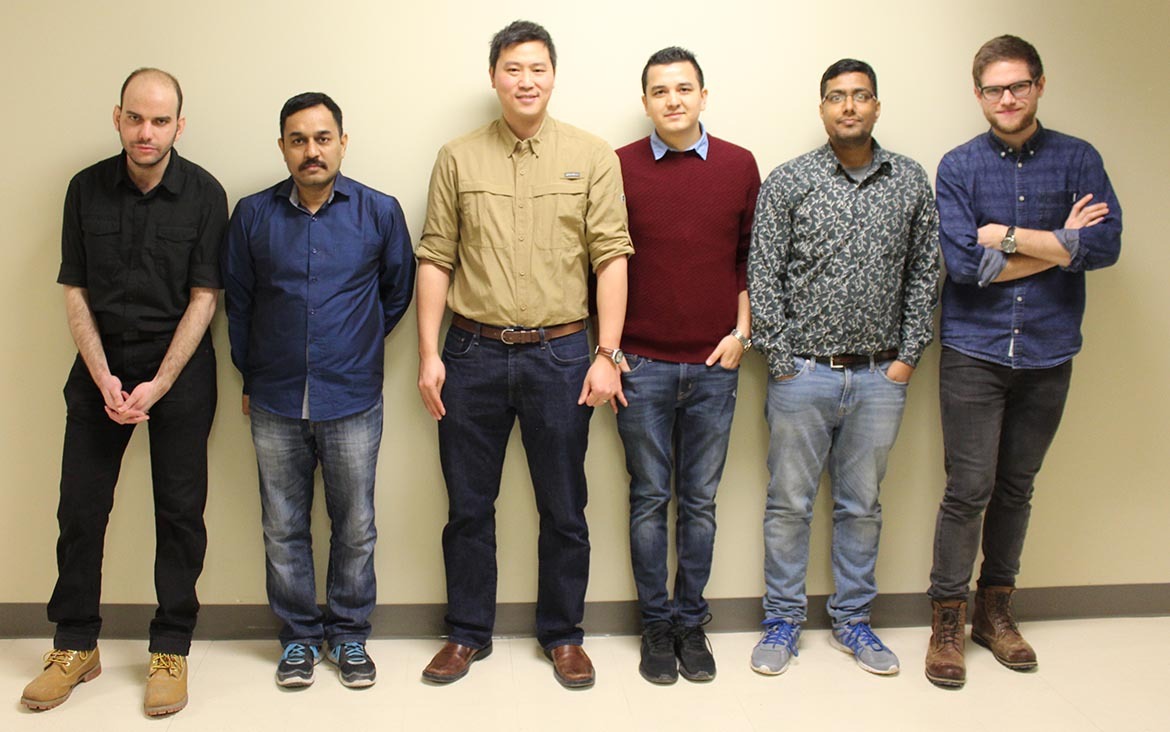Optical sensors to Study the Spinal Cord

Header image bought from istock.com: copyright.
On January 25, 2018, Professor Bora Ung of the École de technologie supérieure (ÉTS) of Montreal published an article on Substance entitled “Special Optical Fibres and Doughnut-Shaped Beams—New Photonic Tools.” In his article, Bora Ung presented his students’ research projects on special optical fibres, doughnut-shaped beams and their applications in telecommunications, as well as laser machining, sensors and optical fibres used in health technologies. On February 7, 2018, Professor Ung and former postdoctoral researcher Yann Facchinello gave a lecture at ÉTS entitled “Doughnut Beams, Special Optical Fibres and their Applications”. Following this presentation, three articles describe in greater detail the research projects at the ÉTS PHotonics Innovation Laboratory directed by Bora Ung. The first article described the projects of postdoctoral researcher Dipankar Sengupta on modal converters and optical moisture sensors, and of Ph.D. student Prabin Pradhan on distributed sensors and optical doughnut beams. The second article presented the research work of doctoral student Manish Sharma describing a special optical fibre designed for doughnut beams and biochemical detection, and of master’s student Bastian Lizut on parallel optical sensors measuring several parameters related to air quality. This third article presents the work of former postdoctoral researcher Yann Facchinello and student Pierre-Luc Verville, and ends with a description of upcoming research projects at the PHotonics Innovation Laboratory.
Yann Facchinello—Optical Fibre Sensors for the Spinal Cord
Yann Facchinello worked as a postdoctoral researcher at ÉTS under the direction of Éric Wagnac and Bora Ung from ÉTS, and orthopedic surgeon Jean-Marc Mac-Thiong from Hôpital Sacré-Coeur in Montreal. During his work at ÉTS, he collaborated closely with two researchers from the PHotonics Innovation Laboratory: Ph.D. student Prabin Pradhan and postdoctoral researcher Dipankar Sengupta. Mr. Facchinello is now a “System Designer” in the robotics department at Zimmer CAS, a biomedical company located close to ÉTS.
One of his projects at ÉTS was to better understand the biomechanics and therefore the neurological consequences of spinal cord injuries. In traumatic spinal injuries, bone fragments from damaged vertebrae exert localized pressure on the spinal cord, affecting the patient’s neurological functions. The biomechanics of these fractures are still poorly understood, and reproducing fractures in the laboratory is an effective way to study the dynamic compression of the spinal cord. However, measuring these compressions is complicated and represents a major technological challenge.
Dr. Facchinello and his collaborators proposed the use of a fibre-optic-innervated synthetic spinal cord to measure in real time the spinal cord compressions occurring during a fracture. He joined the PHotonics Innovation Laboratory to work on the integration of four optical fibres into this spinal cord. The fibres have a diameter of 250 microns—about the thickness of three human hair strands. These ultra-thin fibres inserted in the marrow do not affect the mechanical properties, and they made it possible to dynamically measure in real time the minute deformities in the synthetic marrow, while preserving adequate mechanical behaviour.

Pierre-Luc Verville—Oximetry Optical Sensors for Patient Simulators
Pierre-Luc Verville, a student from the Saguenay region of Quebec, will complete a Bachelor’s degree in Electrical Engineering at ÉTS in the spring of 2018. During his studies, he worked part-time at the PHotonics Innovation Laboratory on the development of an optoelectronic system for a fibre optic moisture sensor, in collaboration with Senswear Inc. He is now involved in an oximetry optical sensor project for patient simulator dummies, in collaboration with CAE Healthcare.
Upcoming Projects
The team of researchers at Bora Ung’s PHotonics Innovation Laboratory will continue to work in collaboration with Éric Wagnac’s team to develop new applications for biomedical optical sensors. As part of the project to better understand spinal cord functions, optical fibres will be inserted into the spinal cord of pig corpses. This study will provide a better understanding of the biomechanical impacts of an accident on the human spinal cord in order to establish better care protocols. Our researchers will also work in the dental sector to develop sensors made of optical fibres. These sensors will measure jaw forces in patients in order to design dentures that are perfectly adapted to their needs.
The research on biomedical optical sensors at the PHotonics Innovation Laboratory will be expanding in the coming years. Silicone-based optical fibre sensors and flexible waveguides, as well as optical measurement methods will be designed for various medical applications. There is a growing demand for smart devices embedded in clothing and for personalized medical applications.
In 2018, researchers from the PHotonics Innovation Laboratory will also design applications using doughnut beams for machining purposes, namely, drilling, marking and etching of metals and other types of materials. Laser machining is a fast-growing market.
Members of the Research Team
Professor Bora Ung’s research team consists of a postdoctoral fellow, three doctoral students, a master’s student and a bachelor’s student.

From left to right are PhD student Mahmoud Gadalla, postdoctoral researcher Dipankar Sengupta, Professor Bora Ung, PhD students Prabin Pradhan and Manish Sharma, and master’s student Bastian Lizut. Former postdoctoral researcher Yann Facchinello and undergraduate student Pierre-Luc Verville were not present when this photo was taken.
Other Articles on this Topic
Please read the articles on Substance presenting current research projects at the ÉTS PHotonics Innovation Laboratory directed by Bora Ung, namely:
Fibres optiques spéciales et faisceaux annulaires, de nouveaux outils
Optical Sensors for Biomaterials and Air Pollutants
Research Projects Available at the PHotonics Innovation Laboratory
Professor Bora Ung is looking for students to conduct master’s and Ph.D. projects at ÉTS in Electrical and Mechanical Engineering. Flexible silicone-based waveguides will be designed to produce flexible biometric sensors that can easily be integrated into clothing. Various applications in athletics may also be part of the research projects.
Professor Bora Ung is always ready to listen to students interested in laser, fibre-optic and electromagnetic applications, for end-of-studies projects and 15-credit master’s projects in engineering.



